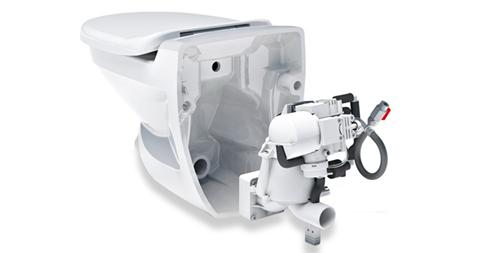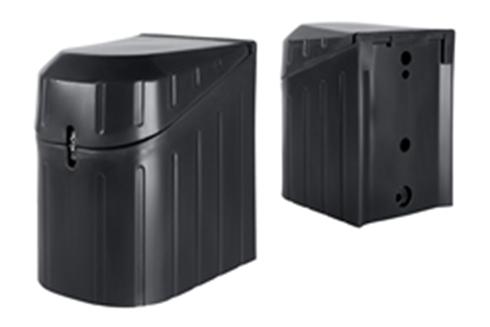Products
|
Toilets
Our vacuum toilets use air not water as the transport agent of toilet waste but a small amount of water is used to keep it clean. As little as 0.5 litres of water per flush compared to 6 litres for a traditional toilet provides a water reduction of approximately 90%. This low water consumption provides a reduced quantity of waste - up to 80% less compared to a traditional toilet. The energy consumption is also extremely low at approximately 4 kwh per person/year.
Here at Otter Vacuum™ and JETS™ in Norway we are big on being efficient and environmentally friendly, which is why the amount of water and energy is so low across all of our products. We are passionate about refusing to waste the world’s natural resources and reducing our biological impact on the planet.
The toilets are manufactured in porcelain and stainless steel and can be supplied for wall or floor mounting. Neither the toilet nor the room need ventilation as the vacuum toilet is in itself a self-contained ventilation mechanism, where bacteria and pathogens are sucked into the sealed system. This provides you with a high level of comfort and an excellent level of sanitation.

To see the collection of toilets available
Click here to see more
More information on our efficient Charm Toilet
Click here to see more
Parts list & installation of the Charm Toilet
Click here to see more
How does gravity and vacuum systems compare?

How much can you save with a vacuum system?

|
|
|
Vacuumarator
™
Pump
JETS™ vacuum generators and the Vacuumarator™ Pump technology is patented and the continuous development carried out by JETS™ has resulted in the most efficient Vacuumarator™ Pump being introduced in 2006.
The Vacuumarator™ Pump generates vacuum, macerates the waste and pumps the effluent to the mains, a storage tank, or composting system.
Depending on the size of the Vacuumarator™ Pump between 120 and 2500 flushes per hour can be achieved and multiple pumps means there is no limit for your event, festival or household.
A JETS™ Vacuumarator™ Pump works by evacuating air via the waste pipes, this takes place automatically with activation of the flush button. On flushing, a valve is opened to the toilet. The air difference thereby occurring ensures that transport of the toilet waste takes place. At the same time, the waste is macerated and pumped to the sewage system, a storage tank or to a BIO tank for composting. The toilet is supplied with a small amount of water to keep it clean. The whole operation takes only a few seconds.
|
|
|
Collecting Tanks & Grey Water Tanks
The waste goes through a valve in a sealed tank, which is emptied as required by a drainage vehicle. The tank can stand on the ground or be buried. The entire system - toilets, pipes and tank - are completely sealed and nothing can either enter or leave the system. Tank size depends on the number of toilets connected to it but the standard volume is 900 litres.
|
|
|
Jets Bio Tank
The JETS™ Bio tank is a user friendly, clean and efficient composting system which will provide you the best environmentally friendly solution for every disposal of waste. The tank has a capacity of approx 1200 flushes.
We offer this product specific to those where emptying a tank is sometimes difficult or physically impossible and where sewage networks are unavailable. The Bio tank is built where most convenient, e.g. in an outbuilding, under a cabin, dug into the ground or by a wall.
 Specifications:
Specifications:
-
170L Bio tank
-
Weight- 33.5kg
-
Dimensions- 556(w) x 730(l) x 860mm(h)
-
Fittings- pipe fittings, hose and cable ties
-
Basket for bio tank
-
Filter for bio tank (made of hessian to improve strength and maintain biodegradability)
Extra accessories:
-
Heating cable (prevent frost in cold climates)
-
Cover
-
T-pipe 32mm (for multiple tank connections)
-
Ball valve (for multiple tank connections)
-
Elbow with clamping ring (for multiple tank connections)
How it works
Once the toilet is flushed the macerated waste flows into the particle filter which is fitted in the tank. Liquid passes through the filter and solids are withheld in the filter to use as compost. After this, one of the following methods can be taken depending on your situation;
-
Dispersal into an external filtration trench/hole underground
-
Dispersal into an external sewage network
-
Collection of waste in a chamber to use as fertiliser
-
Collection into a chamber for emptying into a sewage tank
|
|
|
Sewage network
You can connect the toilets to an external sewage network, this can be small diameter sewage piping or heavy duty waste piping
|
|
|
|
